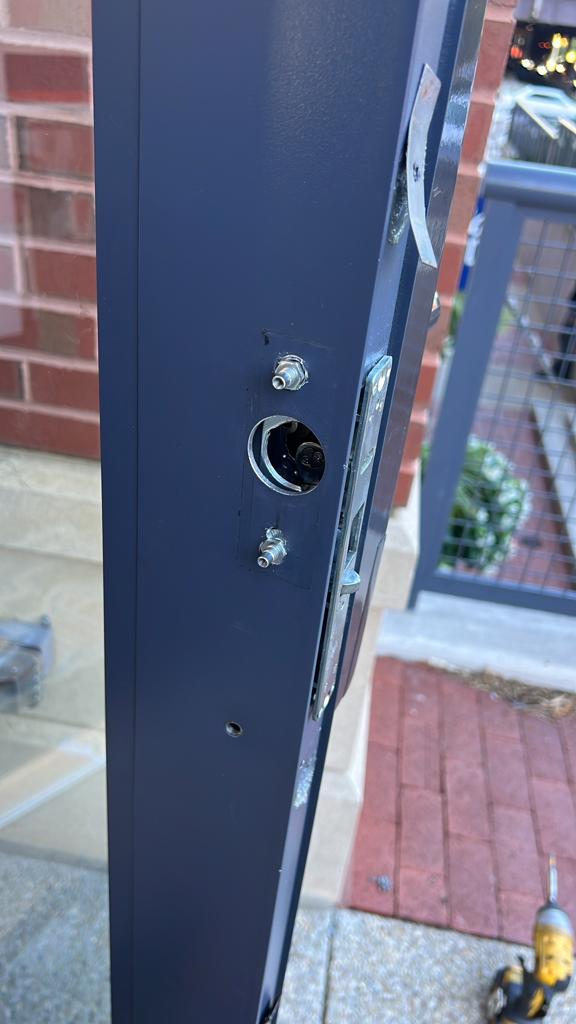Embarking on a business lock change in Downtown DC as a locksmith technician is not merely a routine task; it’s a critical step in fortifying the security of a commercial space. In this post, I’ll guide you through the meticulous process, revealing the careful steps taken to ensure a seamless transition from old to new locks.
- Preliminary Assessment: The journey begins with a comprehensive assessment of the business’s security needs. Conversations with the business owner unveil specific requirements, such as upgrading to high-security locks, addressing key control issues, or responding to recent security concerns. This preliminary assessment is instrumental in planning the lock change strategy.
- Inventory and Tool Preparation: Armed with this understanding, the locksmith technician prepares a specialized toolkit tailored for commercial lock changes. This may include a range of tools such as screwdrivers, rekeying kits, and replacement locks corresponding to the chosen security level.
- Key Control Analysis: Before the lock change begins, the technician evaluates the existing key control system. If the business is transitioning to a new keying system, the locksmith ensures compatibility with the chosen lockset and develops a strategy for rekeying or replacing the existing locks.
- Removal of Existing Locks: The process kicks off with the removal of the existing locks. Care is taken to avoid damage to the door and surrounding areas during this phase. For businesses with a high volume of foot traffic, the locksmith works efficiently to minimize disruption to normal operations.
- Installation of New Locks: Once the old locks are removed, the technician proceeds with the installation of new locks. This phase involves aligning the locksets precisely, securing them in place, and ensuring smooth functionality. For businesses opting for electronic access control systems, the technician configures and installs the new devices.
- Keying and Rekeying: The heart of a business lock change lies in keying or rekeying the locks to match the client’s security preferences. This may involve creating entirely new key systems, rekeying locks to a master key system, or implementing high-security key control measures.
- Testing and Quality Assurance: Every lock undergoes rigorous testing to ensure flawless functionality. The technician checks for smooth key rotation, secure locking mechanisms, and accurate electronic access control responses if applicable. This stage is critical in delivering a reliable and secure locking system.
- Client Education and Documentation: The locksmith technician takes the time to educate the business owner or key personnel about the new locks. This includes providing information on proper usage, maintenance, and any additional security features. Documentation is essential, encompassing details of the lock change for the client’s records.
- Final Inspection and Departure: Before concluding the business lock change, the locksmith technician conducts a final inspection. This involves scrutinizing each lock, ensuring that keys operate smoothly, and verifying that electronic systems are synchronized. Any tools or debris are carefully removed, leaving the business with a fresh and secure locking system.
Conclusion: A business lock change demands not just technical proficiency but a strategic approach to security. As a locksmith technician, each intervention is a commitment to fortifying the foundation of commerce, ensuring that the business can operate with confidence and security in an ever-evolving landscape.
Against the dynamic backdrop of Washington, D.C.’s Downtown Northwest, a locksmith job unfolded seamlessly, intertwining technical expertise with the urban vibrancy of this distinctive locale. As the locksmith adeptly addressed a resident’s security concerns, the bustling streets, including the iconic K Street and Massachusetts Avenue, bore witness to a successful intervention. Nestled amidst the commercial energy of Downtown Northwest, the locksmith’s work resonated with renowned local businesses such as the historic Old Ebbitt Grill and the upscale CityCenterDC. The proximity to cultural landmarks like the National Geographic Museum and vibrant attractions like the Walter E. Washington Convention Center added a layer of significance to the locksmith job. Beyond enhancing security, this intervention became a testament to the locksmith’s role in safeguarding the beating heart of Downtown Northwest, encapsulating the essence of this thriving urban hub in the nation’s capital.
